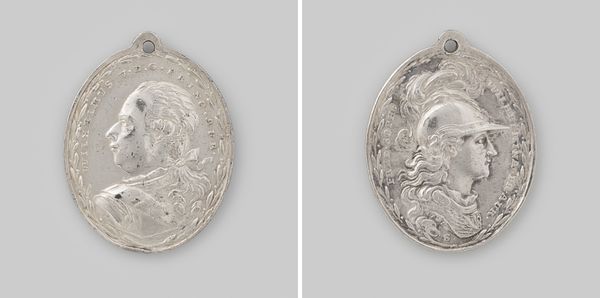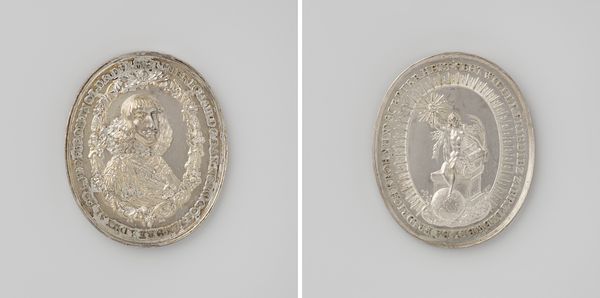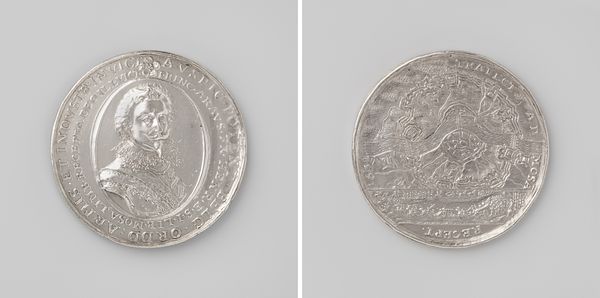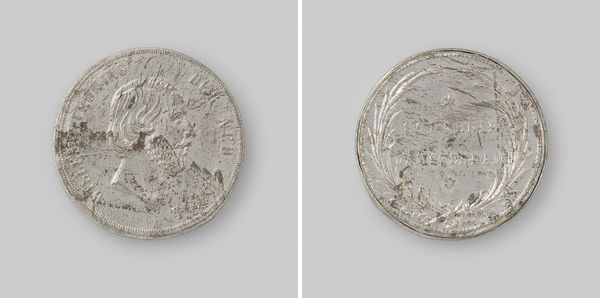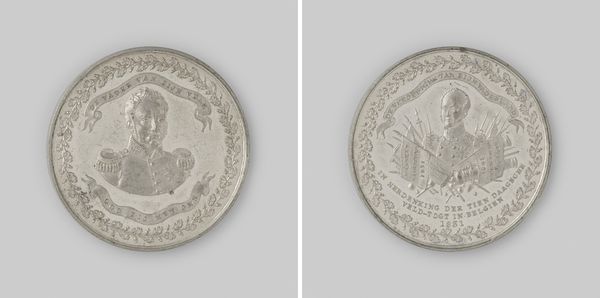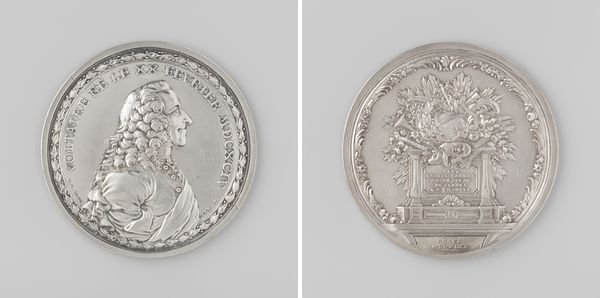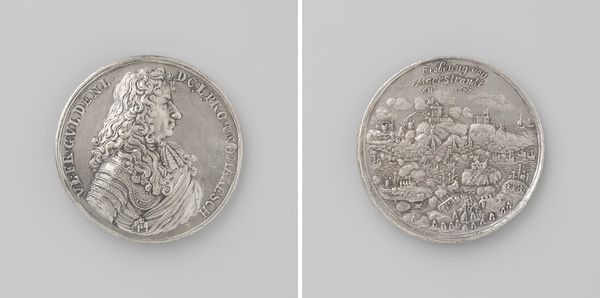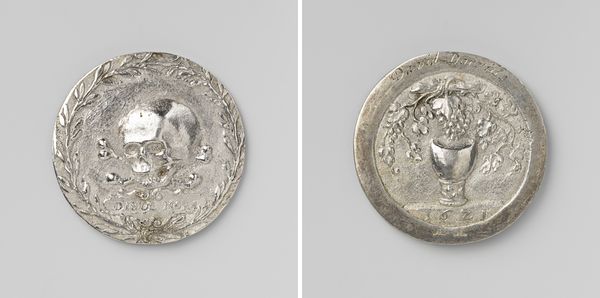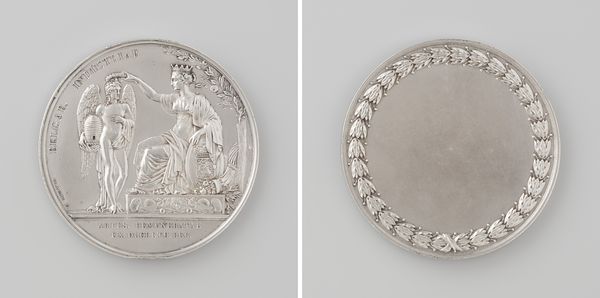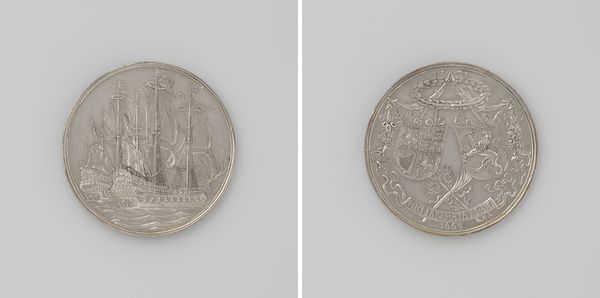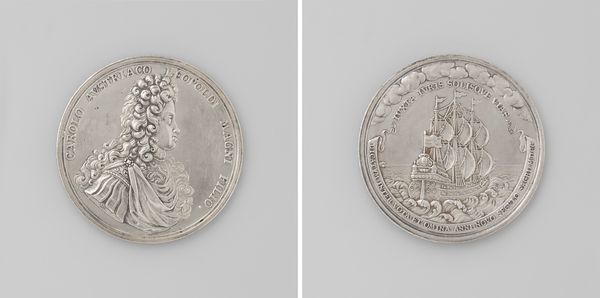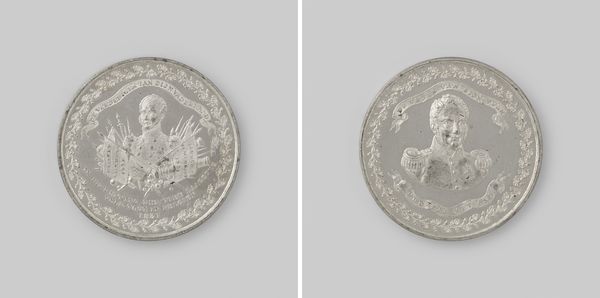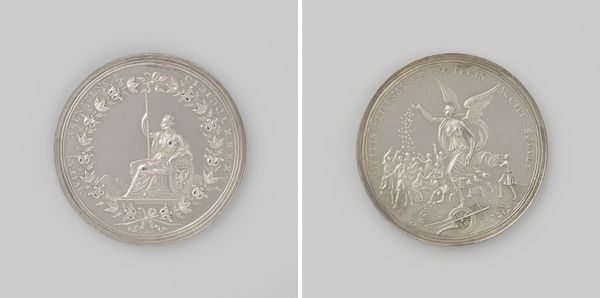
metal, relief
#
portrait
#
baroque
#
metal
#
relief
#
history-painting
Dimensions: diameter 6.9 cm, weight 80.24 gr
Copyright: Rijks Museum: Open Domain
Curator: Here we have a metal relief from 1624 titled "Maurits, prins van Oranje-Nassau" by Jacob van Bylaer. Editor: Wow, it’s stunning! The way light catches those finely crafted details gives the piece such a somber but powerful feeling. Curator: Indeed. These medals often functioned as political tools, serving as both commemorative objects and as subtle forms of propaganda, especially during the Dutch Golden Age. Editor: It feels quite self-serving, doesn’t it? Seeing how Maurits is portrayed gives a sense of constructed authority, carefully crafted for a specific message about leadership and power, right? Curator: Precisely. The historical context is essential; Maurits was instrumental in the Dutch revolt against Spanish rule. Distributing medals like this bolstered his image and, by extension, the legitimacy of the fledgling Dutch Republic. These pieces weren't just art, but political instruments, aimed to sway opinions. Editor: I'm intrigued by the fact that metal was the choice for medium, as its durability must have allowed this political message to transcend generations. I'd argue that this choice further validates his stance and values by showcasing their strength in the most literal way possible. Curator: The very composition emphasizes stability, permanence, and a visual statement of unbroken lineage that was strategically crafted at a crucial time in Dutch history. The choice of baroque as the defining artistic style also plays a part in imbuing Maurits with regal qualities through movement, tension, and elaborate detailing. Editor: Thinking about this within contemporary conversations of how historical narratives are built and solidified, the nuances behind this relief urge me to think more carefully about the impact that powerful people had on Dutch society then, and how this still shapes the Dutch social narrative today. Curator: Absolutely. Appreciating pieces like these isn't just about aesthetic values; it’s about critically examining the societal currents that influenced their creation and impact. Editor: It adds so much depth to something that at first glance simply looks like a regal ornament, prompting important reflections on art as a tool of historical meaning-making and, perhaps more controversially, historical revisionism. Curator: Agreed, a compelling dialogue to ponder as we consider the public role and responsibility of artwork. Editor: An intersectional insight indeed! I'll keep that in mind as we approach the next artwork!
Comments
No comments
Be the first to comment and join the conversation on the ultimate creative platform.
